If you have ever looked up at the sky and wondered what is going on there, you are not alone. Lots of beginner astronomers grab their telescope every day to point it into the open sky. A universe is an excellent place, and there is never a lack of beautiful things to see.
Our top pick for the best telescopes for viewing planets is the Orion SkyQuest XT6 Plus Dobsonian Reflector Telescope. It has a 6-inch bezel, which is much more than the other telescopes on our list. The large aperture and the 1200mm focal length will undoubtedly give you a better view of the planets.
Even though this is only a small cosmic change, the Milky Way has more than 100 billion stars. Using a telescope, you can discover minor details and see what you cannot see with the naked eye. If you are wondering which is the best telescope for viewing the planets, then read on.
Table of Contents
- Best Telescopes For Planet Viewing – Comparison Table
- What is Planet or Galaxy Viewing?
- How do Telescopes Help to See Galaxies?
- What to Look for?
- Best Telescope For Planet Viewing
- 1. Orion SkyQuest XT6 Plus Dobsonian Reflector Telescope
- 2. Celestron AstroMaster 70AZ Refractor Telescope
- 3. Orion 9024 Astroview 90mm Equatorial Refractor Telescope
- 4. ECOOPRO 70mm Astronomy Refractor Telescope
- 5. Celestron StarSense Explorer DX 102AZ Telescope
- 6. Gskyer 70mm AZ Mount Astronomical Refracting Telescope
- Key References
Best Telescopes For Planet Viewing – Comparison Table
What is Planet or Galaxy Viewing?
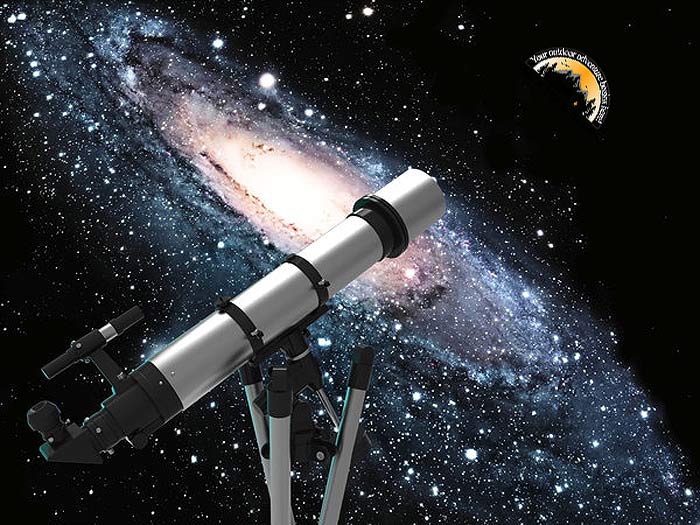
Planet or galaxy viewing involves seeing the planets in our solar system with the naked eye. Of the 8 planets in the solar system, only 5 of them can be seen with our naked eye. Saturn, Jupiter, Mars, Venus, and Mercury are all visible at different times of the year.
Suggested Readings:
![]()
How do Telescopes Help to See Galaxies?
You have likely looked through the telescope and seen distant celestial bodies like the moon as well as other planets, but how exactly does this device help you see galaxies?
- The shape of the lens or mirror of a telescope concentrates light. We see this light when we look through a telescope.
- Telescopes are tools used by astronomers to see distant objects. Typically, most telescopes operate with curved lenses to focus and gather light from the night sky, so we can see the galaxies.
![]()
What to Look for?
When buying the best telescope for viewing planets and galaxies, there are a few things to consider before investing.
A) Focal Length
The focal length is the distance from the telescope lens center to a point where the light hits the focus. Typically, telescopes comprise two parts. These are:
- Primary concave mirror (so-called “reflector” telescope) -or-
- Optical tube: It contains the objective lens and is known as “refractive telescopes“.
Basically, the larger the focal length of a telescope, the larger items appear in the sky.
![]()
B) Aperture Size
Another critical factor to consider when shopping for the best telescope to see planets is the aperture size.
- This is because it is essential for how much you will ultimately see. The aperture size is the telescope’s diameter. Well, if you’ve ever wondered why telescopes are different in sizes.
- It is because the size of a telescope and its resolution are closely related. The higher the resolution of the telescope, the more precise details can be displayed.
- In other words, the higher the resolution of your telescope, the more clearly it can display objects in the sky.
![]()
C) Focal Ratio
The focal length ratio of a telescope determines the image quality that it can deliver.
- This ratio is calculated by dividing the focal length and the diameter of the telescope.
- The easiest way to understand what the focal ratio does is to look at the following scenarios:
- If you have 2 telescopes with the same focal length, but one of them has a higher focal length ratio, the telescope with the higher focal length ratio has a larger diameter.
- Similarly, suppose you have 2 telescopes with similar aperture size. Still, one has a larger focal ratio, the other with the larger focal ratio is a much longer telescope.
In the two examples, this can be problematic, especially if you want to take your telescope with you on trips.
![]()
D) The Mount
The stand provides the basis for your telescope.
- It is the support that forms the basis and supports all other parts. Because it is responsible for the weight of expensive equipment, it is an essential part of a telescope.
- Since it forms the basis of the telescope, its secondary goal is to stabilize the telescope. The firmer it is, the better it will hold against the wind.
![]()
Best Telescope For Planet Viewing
Here are the best telescopes for planet viewing on the market today:
1. Orion SkyQuest XT6 Plus Dobsonian Reflector Telescope
If you have asked most astronomers what the best telescope for viewing the planets is and you are not ready to spend thousands, they will tell you the same thing: get a high aperture Dobsonian.
- The Orion SkyQuest XT6 Plus Dobsonian Reflector Telescope is a magnificent example of what you can get precisely if you are looking in the mid-price range. It’s a step up in the class of cheaper telescopes for several reasons.
- The large aperture that lets in more light will certainly give you a better view from your telescope.
- Also, this best professional telescope has a 1200mm focal length, allowing for greatly magnified views. What some people especially like about the Dobsonian is that it is straightforward to fold and store.
- Overall, it is one of our favorite options for a high-quality telescope that gives you fantastic views of the planet.
- Are dobsonian telescopes good for viewing planets? Yes, this best telescope to see planets is a bit more expensive than the other options listed, but it is definitely worth it if you have it.
- Easy to use
- Large aperture
- Excellent for observing distant objects.
- Comes with a collimation cap.
- Slightly heavy
![]()
2. Celestron AstroMaster 70AZ Refractor Telescope
The Celestron AstroMaster 70AZ Refractor Telescope is a superb choice if you need a quality telescope.
- The 70mm aperture is ideal for viewing very distant objects, such as the Orion Nebula.
- Thanks to the intuitive alt-azimuth panhandle and mount, locating celestial objects is a breeze.
- Also, this telescope features a sturdy, full-height adjustable steel tripod.
- The powerful aperture optics combined with the two eyepieces produces fantastic magnification.
- This best telescope under $1000 includes two eyepieces (10mm and 20mm), which allow you to focus on distant objects with incredible perception and clarity. The focal length is 900 mm. This is another reason you get high-quality images at extremely long distances.
- The Celestron AstroMaster 70AZ Refractor Telescope is very easy to use, so you will have no problem using it to the best of its ability.
- The lightweight frame and quick setup.
- Powerful refractor telescope
- High-quality 70mm optics
- Comes with 2 eyepieces.
- The zoom lens isn’t entirely effective.
![]()
3. Orion 9024 Astroview 90mm Equatorial Refractor Telescope
The Orion 9024 Astroview 90mm Equatorial Refractor Telescope is an excellent choice for anyone looking for a solid telescope with good image quality.
- It has an enlarged aperture, different from the cheaper options.
- The AstroView comes with a 90mm (3.5- inch) aperture, which is a little better for seeing the sky, especially if you are looking for galaxies because you absolutely need this magnified aperture.
- Another thing to keep in mind when examining the Astroview is that it has a 910mm focal length.
- This best telescope for deep space is quite important for those looking for more distant things since the focal length has a greater effect when looking at large images.
We especially liked the AstroView because the two included eyepieces appear to be of outstanding quality.
- They are straightforward to use and are a great way to quickly get a 36x and 90x magnified view.
- Overall, the Orion 9024 Astroview 90mm Equatorial Refractor Telescope is one of the best telescopes on the market, especially for beginners.
- This best telescope for astrophotography is also effortless to install, which is not typical for this type of telescope.
- Crisp, unobstructed views of the planets.
- Classic refractor design
- 6×30 finder and 2 Sirius Plossl eyepieces.
- While focusing, the mount wobbles a little.
![]()
4. ECOOPRO 70mm Astronomy Refractor Telescope
Discover the wonders of the night with a classic beginner telescope.
- The ECOOPRO 70mm Astronomy Refractor Telescope is the best telescope for kids and beginners to explore life and nature.
- The 70mm aperture and 360mm focal length help to create crisp images with increased clarity and brightness.
- Also, the lenses are made of multi-layered glass with a green coating that delivers 99 percent total light transmission.
- This best telescope for beginners comes with two interchangeable eyepieces that allow you to enjoy different magnifications up to 128x.
- The 360-degree rotation design offers a full range of observation. With the 5×24 Finderscope, you can find distant objects more conveniently and faster.
- The adjustable tripod allows for viewing at any position.
- The ECOOPRO 70mm Astronomy Refractor Telescope comes with a carrying bag so you can fit it inside the bag for on-the-go viewing and comfortable traveling.
- Great beginner telescope
- High power telescope
- Adjustable aluminum tripod
- 5×24 Finderscope
- It requires anchoring on powerful winds.
![]()
5. Celestron StarSense Explorer DX 102AZ Telescope
Another option you can choose when buying a telescope is the Celestron StarSense Explorer DX 102AZ Telescope.
- This is another Celestron telescope, which is arguably the most popular brand of the telescope.
- It comes with two eyepieces that allow you to take good images without being overly expensive.
- The key reason people are interested in StarSense Explorer DX 102AZ is that it can be integrated with your phone and your wifi easily.
- You can even install an app (the StarSense app) and use your smartphone to control the telescope. While it sounds like a hack, it is actually a pretty cool feature. Generally, this is another safe option if you want to see the planets clearly and easily.
- Note that you need to make sure the sky is clear to get a magnificent view of the sky. However, this applies to almost all telescopes.
- Easy to set up and use.
- High-quality 4-inch refractor
- The app is compatible with many phones.
- It could be pricey for some astronomers.
![]()
6. Gskyer 70mm AZ Mount Astronomical Refracting Telescope
The Gskyer 70mm AZ Mount Astronomical Refracting Telescope manages to combine affordability with high performance.
- It is the ideal model for any beginner astronomer. The optical capabilities and visual resolution are top-tier for its price.
- This unit has a 400mm focal length and 70mm aperture, which results in high-resolution and precise images.
- It comes with two eyepieces (25mm and 10mm), which offer varying magnification levels.
- It features a fully coated optical lens, which creates high transmission coatings for enhanced image clarity and brightness.
- The magnification from 16x to 120x offers clear, up-close images of the planets.
- The included direction and adjustable-height tripod are convenient for secure storage and observation.
- Compact design
- Convenient and straightforward to use.
- Adjustable height tripod
- Reasonably priced
- Locating target takes practice.
![]()
Our top recommendation for the best telescopes for viewing planets is the Orion SkyQuest XT6 Plus Dobsonian Reflector Telescope. It features a 6-inch bezel that is the highest in all telescopes that we reviewed. The large aperture and the 1200mm focal length make this telescope the best choice for viewing planets.
The universe is filled with fascinating wonders, but because of their distance, these items are barely perceptible to the naked eye.
Using the best telescopes for viewing the planets, you can unlock the smallest details and see objects that most people may never see.
![]()
Key References
- “Refractors – How Telescopes Work | HowStuffWorks”. Accessed June 28, 2020. Link.
- “Reflecting Telescope”. Accessed June 28, 2020. Link.
- “Focal Ratio | Astronomics.com”. Accessed June 28, 2020. Link.

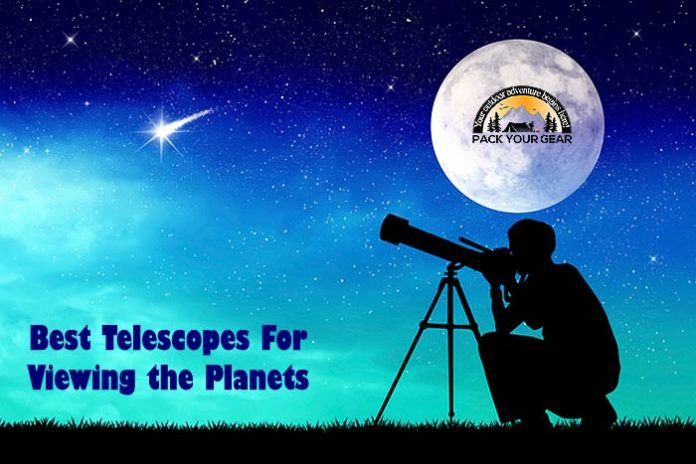





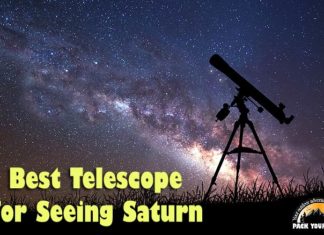
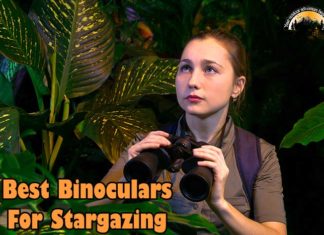








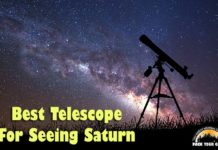



![How To Pick The Best Camper Levelers? [An Ultimate Buyer’s Guide] Best Camper Levelers](https://packyourgear.com/images/Best-Camper-Levelers-100x70.jpg)





